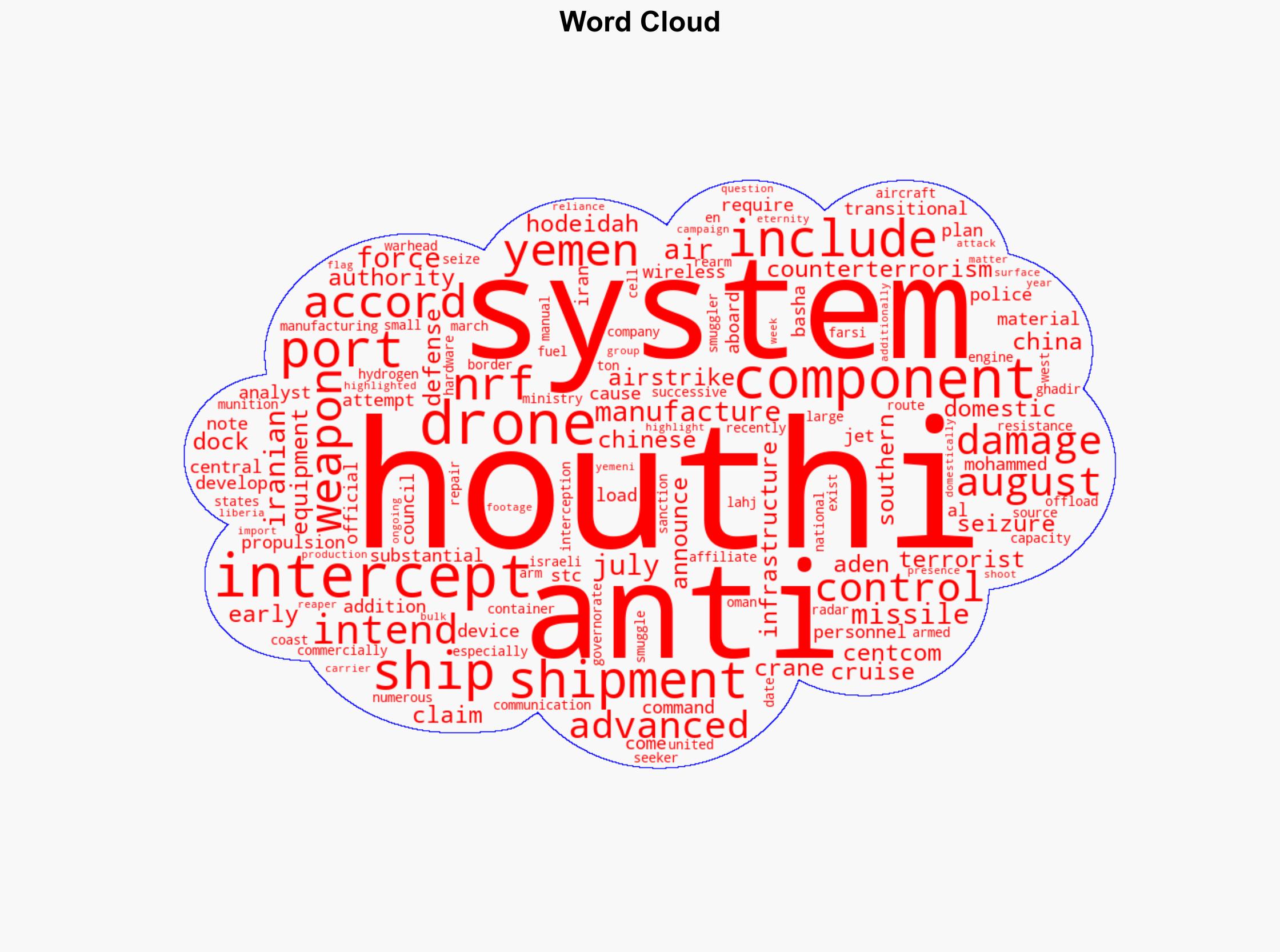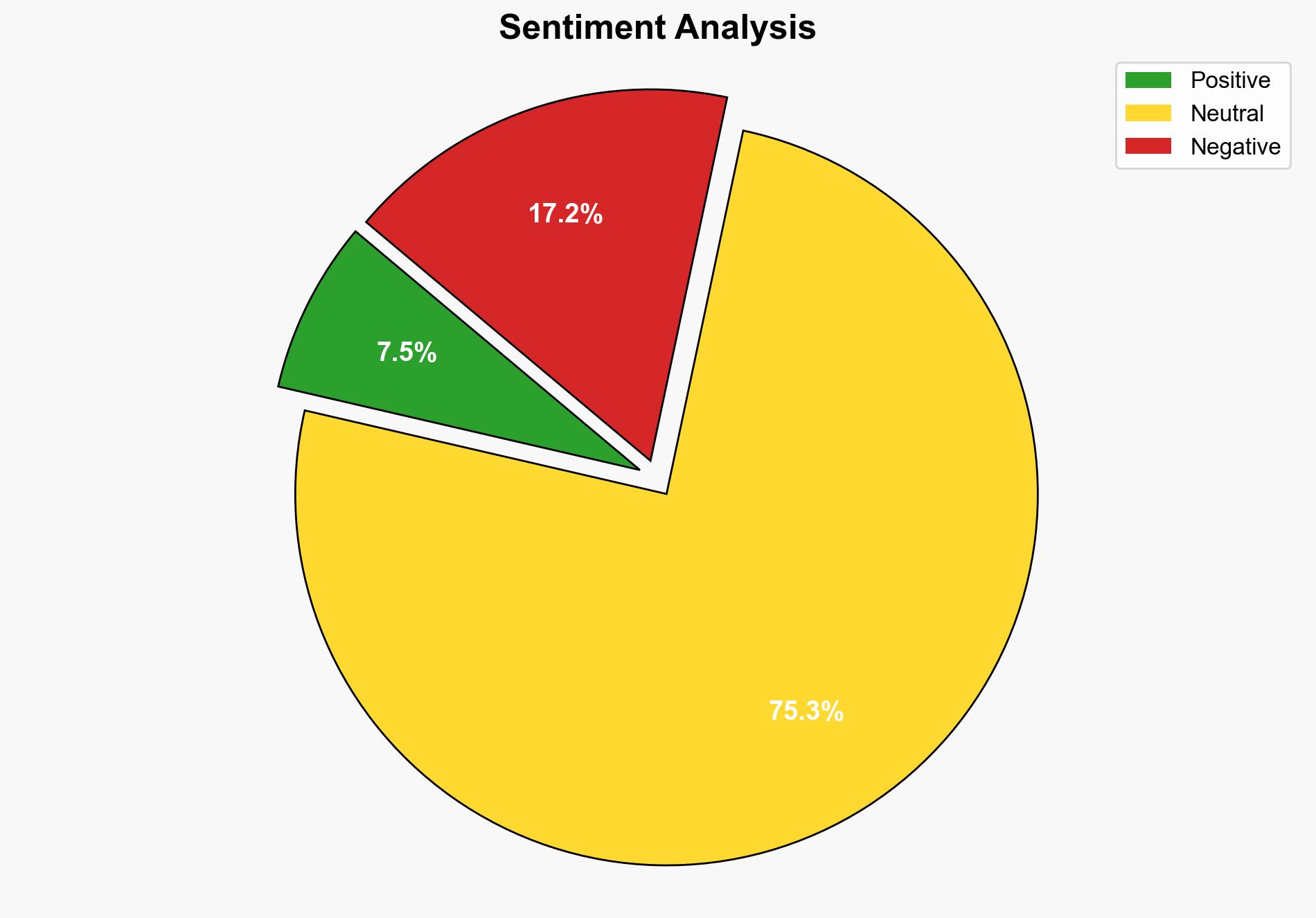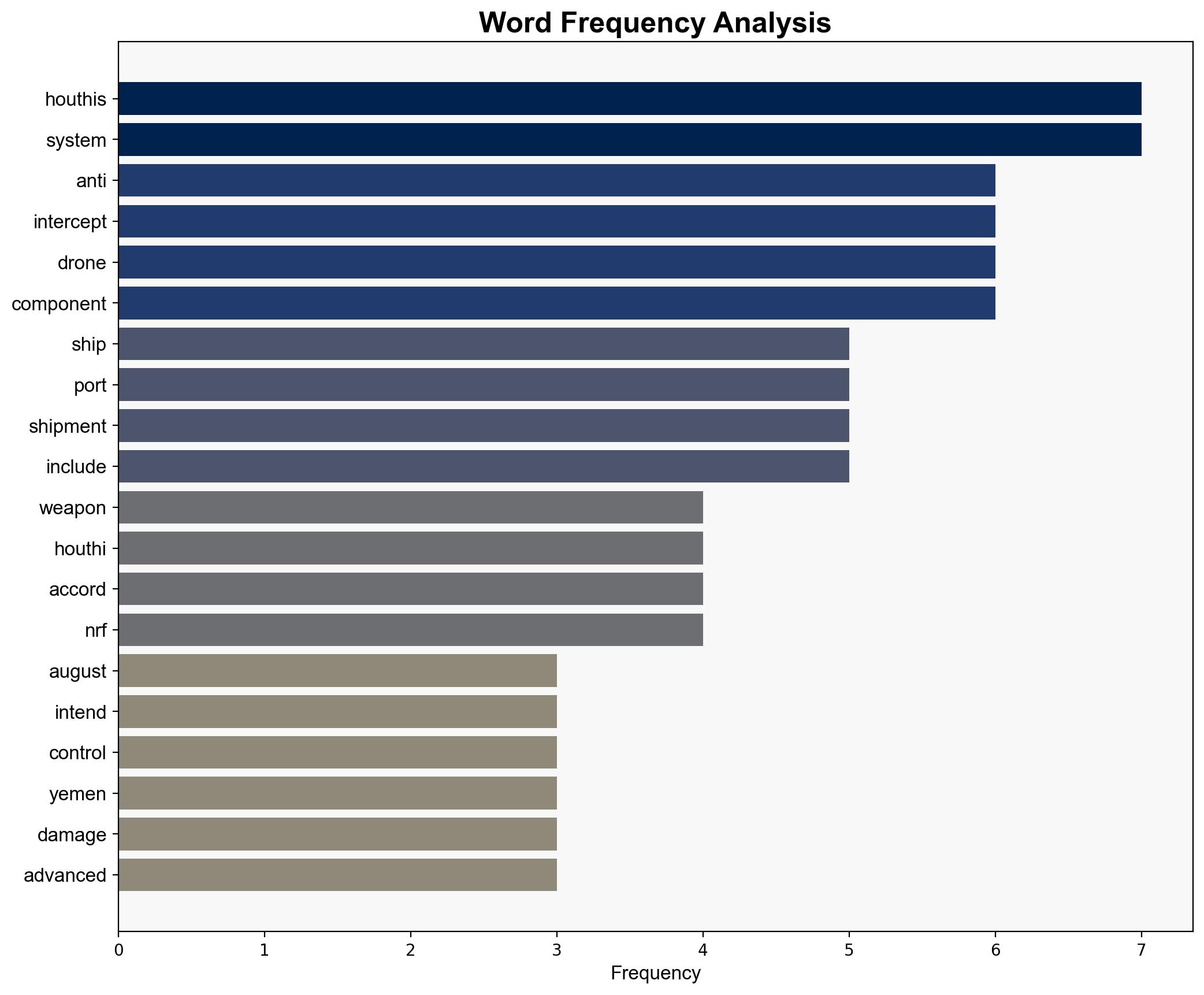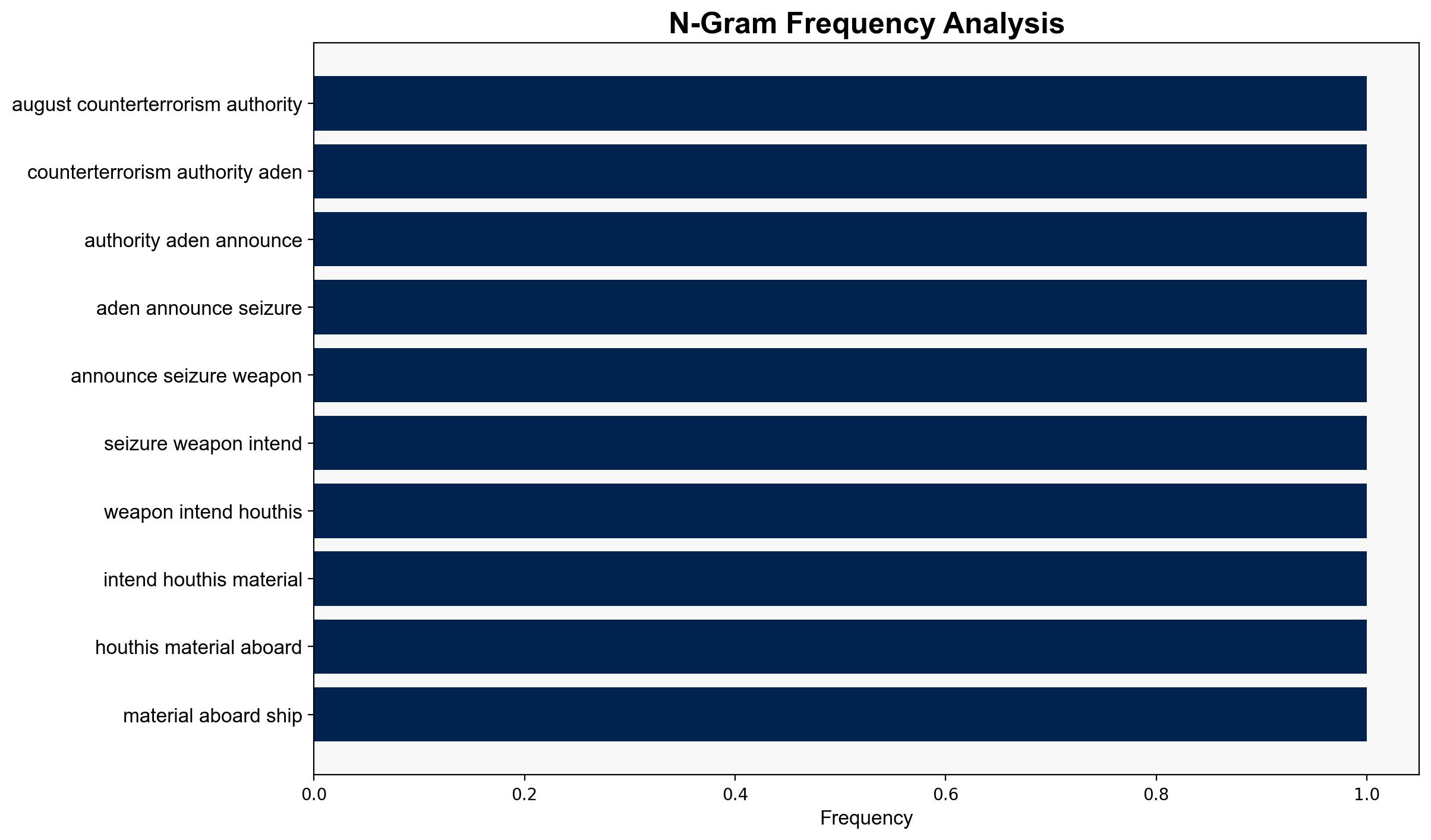Yemeni officials seize weapons sent to Houthis – Longwarjournal.org
Published on: 2025-08-15
Intelligence Report: Yemeni officials seize weapons sent to Houthis – Longwarjournal.org
1. BLUF (Bottom Line Up Front)
The most supported hypothesis is that Iran is actively supplying the Houthis with advanced weaponry, leveraging Chinese components to enhance their military capabilities. Confidence in this assessment is high due to the consistent pattern of intercepted shipments and the presence of Iranian-manufactured components. Recommended action includes increased maritime surveillance and diplomatic engagement with China to curb the flow of military components to the Houthis.
2. Competing Hypotheses
Hypothesis 1: Iran is directly supplying the Houthis with advanced weaponry, using Chinese components to bolster their capabilities. This is supported by the presence of Iranian-manufactured systems and the interception of shipments containing Chinese components.
Hypothesis 2: The Houthis are independently acquiring Chinese components to develop domestic manufacturing capabilities, with limited direct Iranian involvement. This is suggested by the focus on manufacturing components and the Houthis’ claims of domestic production.
3. Key Assumptions and Red Flags
– **Assumptions:** Hypothesis 1 assumes a high level of coordination between Iran and the Houthis, while Hypothesis 2 assumes the Houthis have sufficient technical expertise to utilize these components independently.
– **Red Flags:** The consistent interception of shipments suggests possible intelligence leaks or compromised supply chains. The presence of Farsi manuals raises questions about the extent of Iranian involvement.
– **Blind Spots:** The role of China in these transactions is not fully explored, leaving a gap in understanding the supply chain dynamics.
4. Implications and Strategic Risks
The ongoing supply of advanced weaponry to the Houthis poses a significant threat to regional stability, potentially escalating the conflict in Yemen and threatening maritime security in the Red Sea. The involvement of Chinese components introduces a geopolitical dimension, risking diplomatic tensions between involved nations. The potential for increased sophistication in Houthi attacks could lead to broader regional conflicts.
5. Recommendations and Outlook
- Enhance maritime surveillance and intelligence-sharing among regional allies to intercept future shipments.
- Engage diplomatically with China to address the flow of military components to conflict zones.
- Scenario Projections:
- Best Case: Successful diplomatic efforts lead to a reduction in the flow of weapons, stabilizing the region.
- Worst Case: Continued supply leads to a significant escalation in conflict, drawing in regional powers.
- Most Likely: Intermittent interceptions continue, with periodic escalations in conflict intensity.
6. Key Individuals and Entities
– Mohammed al Basha: Yemeni analyst providing insights into the shipments.
– Central Command (CENTCOM): Involved in the interception and analysis of shipments.
– National Resistance Force (NRF): Actively intercepting shipments on Yemen’s west coast.
7. Thematic Tags
national security threats, cybersecurity, counter-terrorism, regional focus





